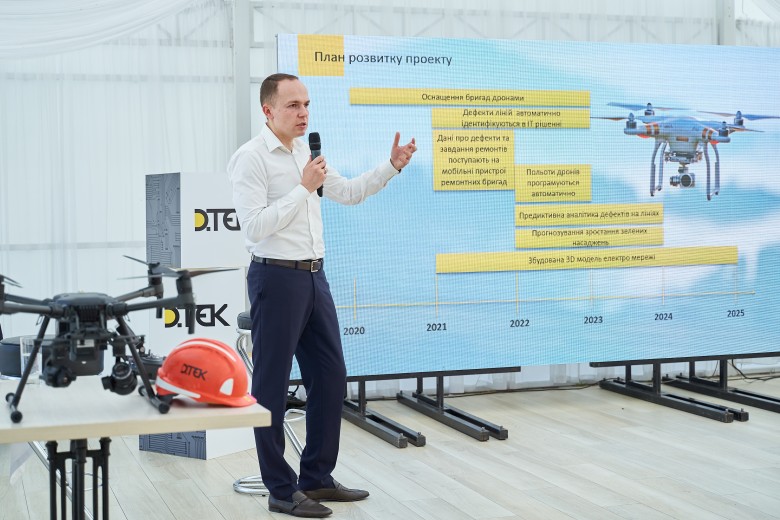DTEK Grids Set Drones for Checking Condition of Electric Grids and for Predicting Faults

For three months DTEK Grids has been carrying out the pilot project on inspecting power lines with drones in Novomoskovsk and Solone districts of Dnipropetrovsk region. Unmanned aerial vehicles were equipped with photo and video cameras as well as thermal imagers. The obtained information was processed by defect recognition software using artificial neural networks. The approach has proved almost 2 times higher efficiency than that of traditional walking inspections.
In particular, covering the flight of 500 kilometers over the grid during a drone survey, specialists detected 916 insulator defects, while during a conventional inspection there were 176 defects. The new approach better records overheating of equipment and makes it possible to inspect 2–3 times larger length of power lines in one working day.
“DTEK is the leader of the digital transformation in the Ukrainian energy sector. The usage of drones and artificial neural networking allows us to predict the suspected fault area and to carry out preventive repairs, strengthening the networks. This will allow to be proactive instead of eliminating the damage caused by a fault. As a result, we ensure high standard of customer service,” – commented Ivan Gelyukh, CEO of DTEK Grids.
As per the company’s calculations, using the up-to-date technologies, by 2025 distribution system operators will improve fault rates and reduce power cutoff time (SAIDI indicator) by 10–15%.
“Drones can be fully integrated into DSO information systems. The obtained data is automatically analyzed with specialized software. An IT system generates reports on its own and provides recommendations to specialists on the priority in repairs. This significantly saves time and minimizes the human factor, and, therefore, increases the reliability of the grids,” – Maris Kunickis, Innovative Project Manager at DTEK Grids, explained IT system operation principles.
Full scale implementation of innovative technology will not lead to the reduction of employees. It is obvious that there will be lessening of need for a large number of specialists directly involved in the inspection. But on the other hand, there will be going up of the demand for specialists who will operate drones and work with databases, manage and maintain a new digital system.
The usage of drones and the custom-made software for data processing with the purpose of diagnostics of electric grids is a project within the MODUS program for digital transformation of DTEK.
Dmitry Osyka, Head of MODUS program, noted, “The following steps are to test multispectral imaging as an alternative to lidar scanning as would be the case for lowering the price of information collection.”
To effectively use the technology by distribution system operators that serve about 1.5 million customers, such as DTEK Dnipro Grids or Kyivoblenergo, one company needs 6–10 drones and appropriate software. The average cost of such complex implementation is about 10 to 12 million hryvnias.
The technology for inspecting grids with drones is actively used by modern European energy companies, for example, ENEL (Italy), E-ON (Germany), CEZ Group (Czech Republic), etc. Whether drones will become a common practice for DSO’s work at an early date in Ukraine depends on the remuneration model in the energy sector. The introduction of incentive tariff setting would allow companies to invest in innovative solutions.

